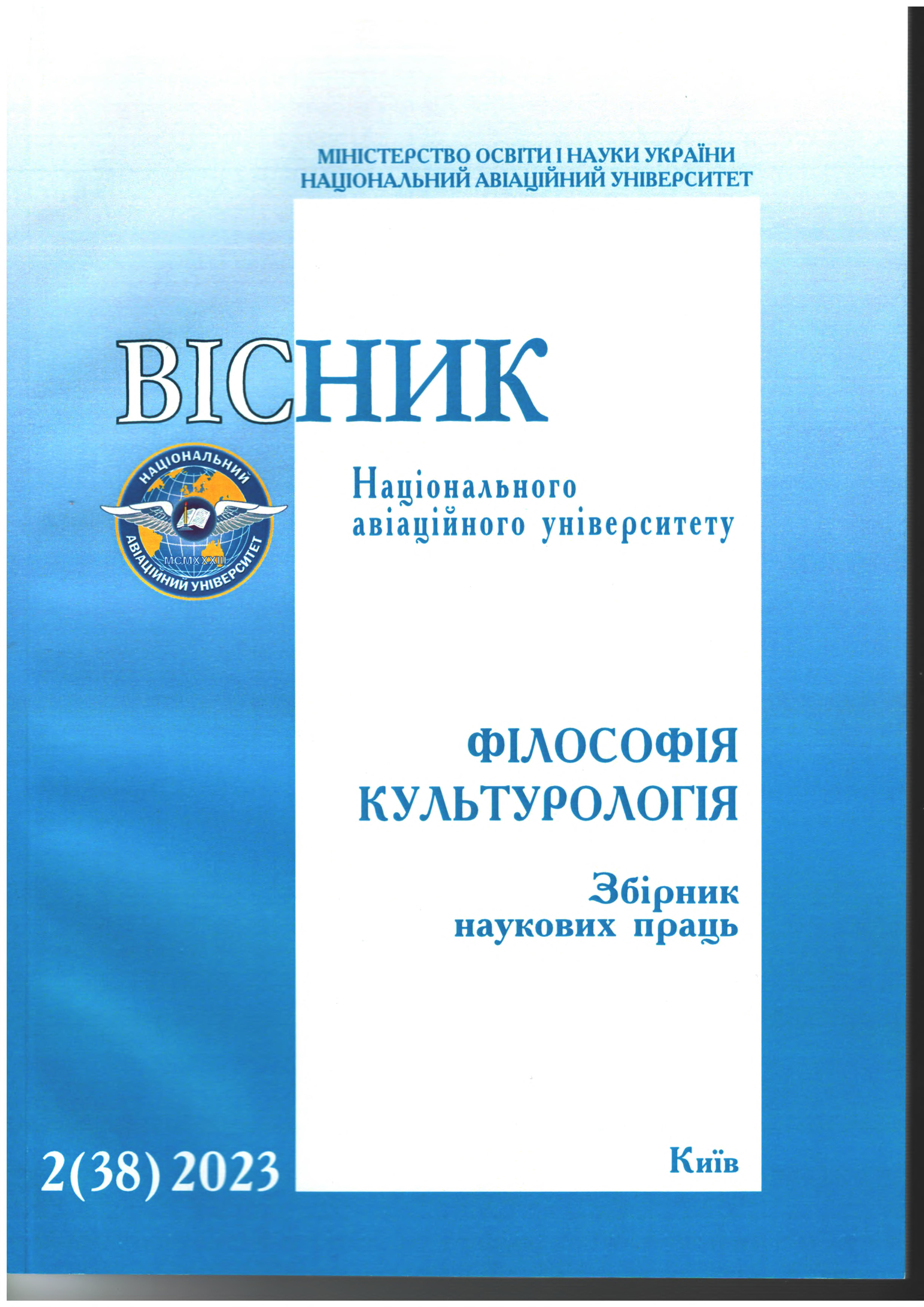ESTESIS OF MUSICAL CULTURE IN THE CONTEXT OF REFLECTION OF THE SEMIOLOGICAL TURN
DOI:
https://doi.org/10.18372/2412-2157.2.18116Keywords:
culture, musical art, aesthetic phenomenon, sign, semiological turn, imageAbstract
Introduction. Emphasis is placed on the relevance of explaining the aesthetic phenomenon (estesis) of musical culture in the context of the semiological turn. The aim and tasks. The aim of the article is to determine the aesthetic constants of musical culture as
correlations of the sensuous and the rational. Research methodology is determined by comparative and systemic approaches to
conduct a comparative analysis of aesthetic correlations of musical systems. Phenomenological and dialectical methods help to
determine figurative transformations of estesis of musical culture. Research results. Word, text, discourse, and language are creative, productive, and model-generating realities. The generative model, according to O. Losev, finds its element in semiology. It is a sign as the unity of signified and signifier, conceptual and sensuous. The semiological turn is the quintessence of the linguistic turn that becomes a marker of interest in the way an individual articulates meaning and defines conceptual matrices of possible frameworks (ontological, anthropological, aesthetic), perceived as a certain meaning-making reality. Conclusions. Language as a mechanism that develops in a certain time and space, is culturally conditioned by the arbitrariness of the sign, the multiplicity of signs necessary for the formation of any language, and the extremely complex nature of writing systems. It is possible to highlight that the change in sign systems, including their ability for connotation, meeting, and exchanging of these relations, along with the changes between the signified and the signifier are complex processes. These processes arise as an attraction to the center and the periphery. The periphery provides a diverse range of dialects of the marginal sound elements such as musical one, which attempts to be legitimate and gravitatestowards the center. The center, on the other hand, attempts to get rid of uncontrolled marginal influences and homogenize the system, making it simpler and more structurally communicative.
References
Barthes R. L'aventure sémiologique, Paris: Seuil, 1985. 358 р.
Derrida J. Trace et archive, image et art; Suivi de Pour Jacques Derrida. Paris, Institut National de l’Audiovisuel (coll. Collège iconique), 2014.
Saussure F., de. Course in general linguistics. New York : Philosphical library, 1959. 264 р.
Гуменюк Т. К., Легенький Ю. Г. Посткомуністична культура в дзеркалі метамодерну : дискурсивний аналіз. Вісник Національної академії керівних кадрів культури і мистецтв. 2019. № 3. С. 14–19. DOI: https://doi.org/10.32461/2226-3209.3.2019.191727
Ділі Дж. Основи семіотики. Львів: Арсенал. 2000. 232 с.
Козаренко О. В. Українська національна музична мова: генеза та сучасні тенденції розвитку: автореферат дис. на здобуття наук. ступеня доктора мистецтвознавства: спец. 17.00.03 «Музичне мистецтво». Київ. 2001. 36 с.
Шип С. В. Знакова функція та мовна організація музичного мислення: автореф. дис. … д-ра наук: спец. 17.00.03. Київ, 2002. 34 с..


